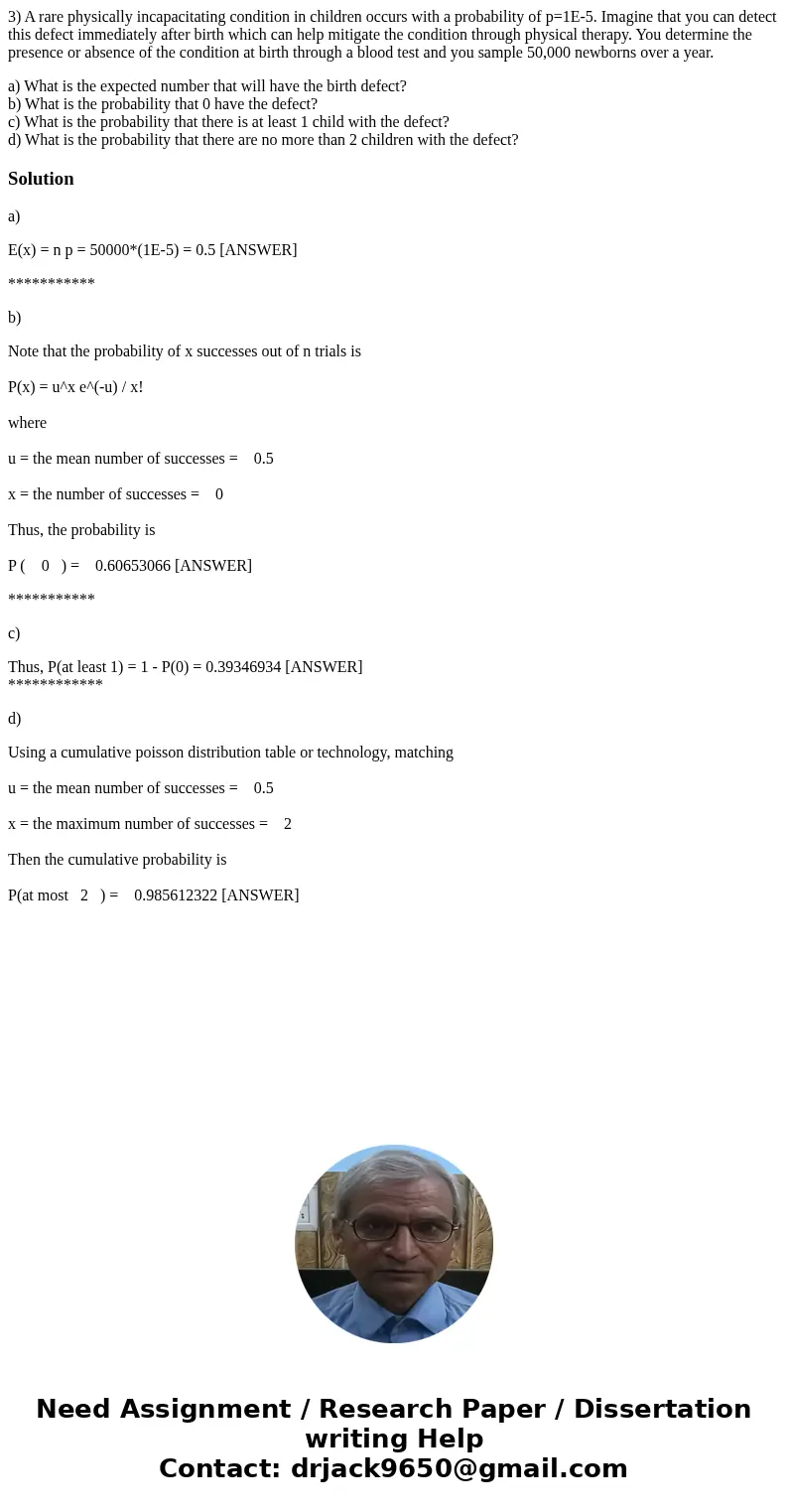3 A rare physically incapacitating condition in children occ
3) A rare physically incapacitating condition in children occurs with a probability of p=1E-5. Imagine that you can detect this defect immediately after birth which can help mitigate the condition through physical therapy. You determine the presence or absence of the condition at birth through a blood test and you sample 50,000 newborns over a year.
a) What is the expected number that will have the birth defect?
b) What is the probability that 0 have the defect?
c) What is the probability that there is at least 1 child with the defect?
d) What is the probability that there are no more than 2 children with the defect?
Solution
a)
E(x) = n p = 50000*(1E-5) = 0.5 [ANSWER]
***********
b)
Note that the probability of x successes out of n trials is
P(x) = u^x e^(-u) / x!
where
u = the mean number of successes = 0.5
x = the number of successes = 0
Thus, the probability is
P ( 0 ) = 0.60653066 [ANSWER]
***********
c)
Thus, P(at least 1) = 1 - P(0) = 0.39346934 [ANSWER]
************
d)
Using a cumulative poisson distribution table or technology, matching
u = the mean number of successes = 0.5
x = the maximum number of successes = 2
Then the cumulative probability is
P(at most 2 ) = 0.985612322 [ANSWER]

 Homework Sourse
Homework Sourse